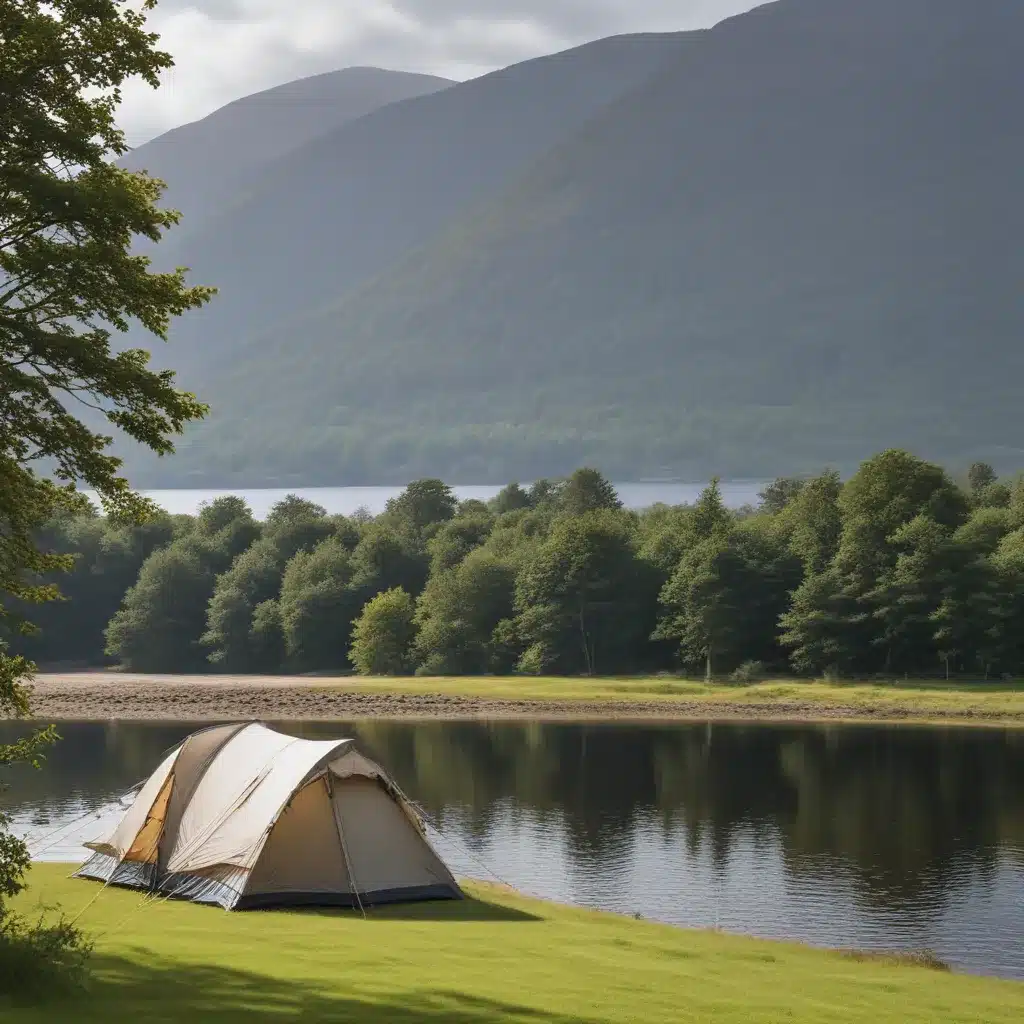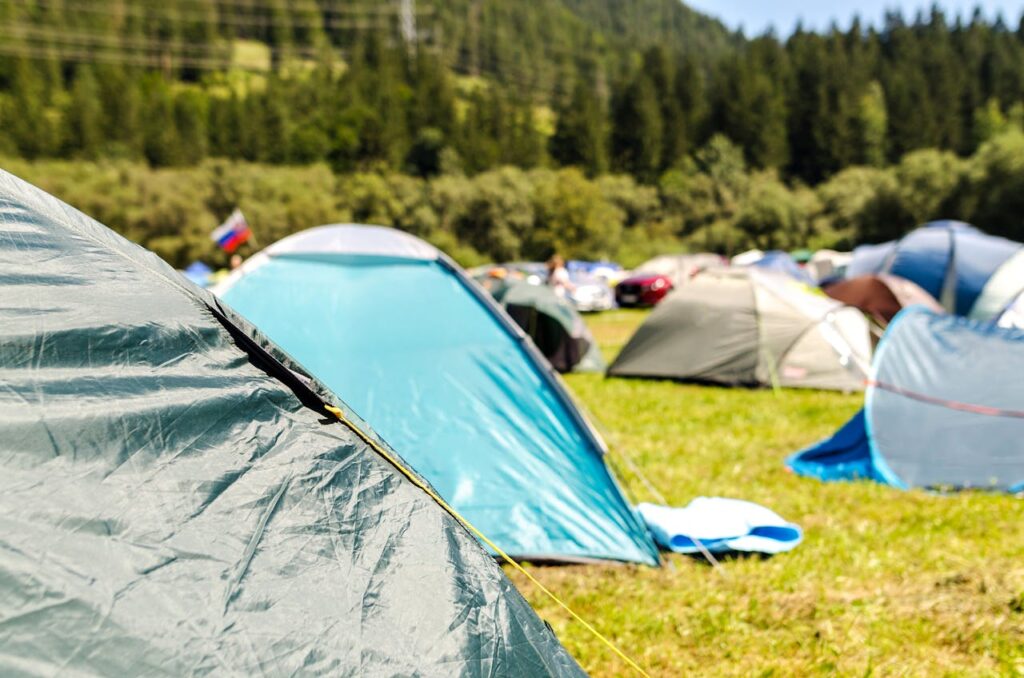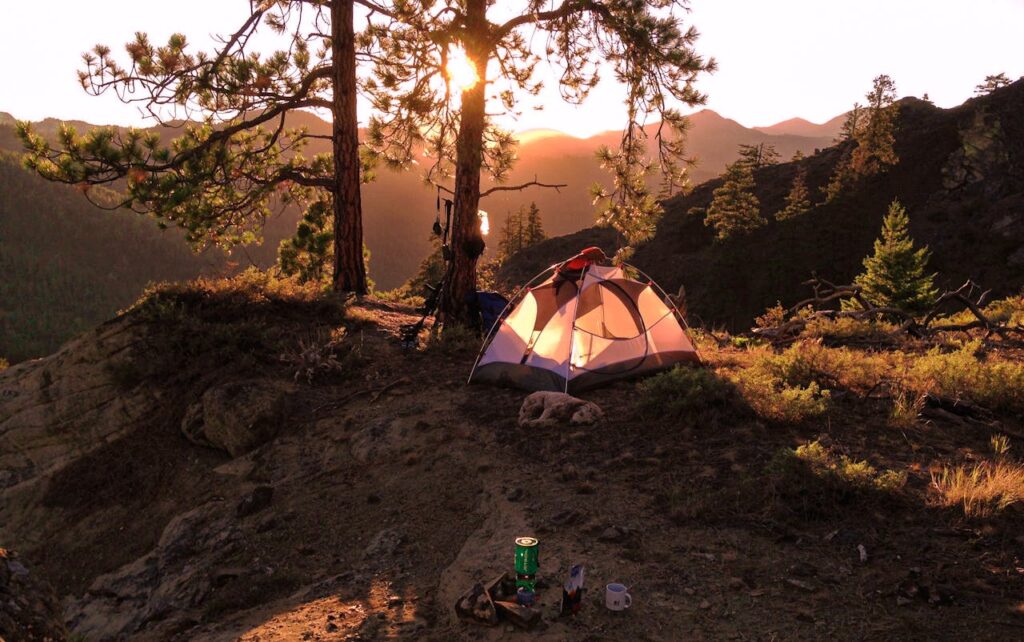
Discovering the Wonders of the Scottish Highlands
As a would-be mountaineer and idiotic adventurer, I’ve always been drawn to the wild and untamed landscapes of the Scottish Highlands. In 2016, I managed to persuade my brother-in-law to join me on a little hiking and camping adventure up in these rugged and beautiful lands. The plan was simple – to walk the length of the newly created Affric-Kintail Way, which runs from Drumnadrochit on the shores of Loch Ness all the way to Morvich in Kintail, a total distance of 44 miles or 71 km.
Traversing the Affric-Kintail Way
The route would take us through dense forests high above Glen Urquhart, before reaching the village of Cannich in Strathglass. From there, we’d continue up Glen Affric, through ancient Scottish pinewoods, past several stunning lochs, and eventually up through the wild and remote upper reaches of the glen, surrounded by majestic Munros. Finally, the route would climb steeply over a main watershed before descending through the mountainous landscape of Kintail, below the iconic Five Sisters of Kintail.
We decided to camp on designated sites where possible, but if we couldn’t find any, we would wild-camp on the shores of the lochs. To add to the adventure, we planned to stay overnight in Scotland’s most remote youth hostel, Alltbeithe, on Stage 3 of the journey. With all the elements in place, we were set for a cracking little adventure.
Setting Out from Drumnadrochit
We arrived in Inverness, the capital of the Scottish Highlands, on a short flight from London and took a local taxi to the central bus station. From there, we caught a bus that took us along the banks of Loch Ness and down to the small village of Drumnadrochit, where we were booked into Borlum Farm to camp overnight. Borlum Farm turned out to be a beautiful and peaceful campsite, surrounded by the rolling hills of the Highlands.
The evening was pleasant and warm by Scottish standards, so we took a little wander down into the village for a pint and a meal at the well-known Loch Ness Inn. Little did we know what adventures awaited us the next day.
Stage 1: Drumnadrochit to Cannich
Early the next morning, we decamped and hit the tarmac, suddenly becoming acutely aware of the full weight of our overly laden rucksacks. Predictably, we had both overpacked, and would end up suffering for this schoolboy error over the next four days in the form of swollen feet, blisters, and generally manky feet.
Rising out of Drumnadrochit, we quickly hit forestry land for the first, but not the last, time. Much of the first part of the trail was through this heavily forested landscape, with large sections following man-made forest tracks wide enough for a truck to drive along. The going was monotonous, and not a great introduction to the walk. We spent what seemed like hours trudging along these never-ending tracks, with views mainly obscured by the tall pine trees planted regimentally on either side.
Luckily, there were some sections where the complete opposite was true, consisting of nice single-track trails through interesting and changing woodland, affording some nice photo opportunities. The second loch of the trip, Loch Meikle (Loch Ness being the first), lay somewhere ahead through the dense woodland, and reaching it would hopefully herald in some open space with more expansive views for the first time.
Finally, we exited the wooded canopy and were rewarded with the openness we had longed for as we arrived at the small loch. The track from here passed through a farm just prior to the small hamlet of Shenval, where we picked up the forest track once again through yet more woodland, heading this time for Corrimony.
At Corrimony, we halted at the 4,000-year-old Chambered Cairn to refuel and relax, unburdening our backs from the weight of our stupidly overpacked and heavy rucksacks. Leaving the ancient site, we picked up the A831 and carefully walked along the side of the road on the soft verge all the way down into Cannich, the “place of the bog cotton.”
Overnight, we camped at the beautiful and quiet Cannich Woodland Campsite, surrounded by the hills of Beinn a Chairein, Carn Dubh-Ghlaic, and Carn Bingally, and sheltered by the ample Scots pines and birch trees growing throughout the park. After setting up camp, we hobbled along into Cannich to find an Inn for something to eat and drink, settling on The Slaters Arms for a pleasant meal and a pint before an early night.
Stage 2: Cannich Village to River Affric
We woke up to a beautiful morning and lazily broke camp, faffing around endlessly while attempting to get all our camping gear to fit back neatly into our rucksacks. This resulted in us not getting in as much mileage as we had hoped for by the end of this second day.
As we left Cannich, we walked past the now derelict old Glen Affric Hotel before turning left onto another forestry road running above Comar Wood. We passed through several areas that had seen some recent tree felling, which had resulted in an opening up of the views along this part of the trail – a very welcome change after so much forestry.
After about another 3 miles, the trail left the forestry road and headed downhill on a narrower, rougher track that zig-zagged to a gate on a public road near to Dog Falls. We crossed the wooden bridge over the River Affric and then headed back uphill through more woodland, eventually arriving at the famous Glen Affric Viewpoint, where we stopped for a welcome break.
Loch Beinn a’ Mheadhoin was now sprawled out below us in spectacular fashion, and we could see the entire way along Glen Affric as far as the distant mountains of Mam Sodhail and Carn Eighe, the highest peaks to the north of the Great Glen. We continued along the side of the loch, enjoying the quiet surroundings and spectacular views, until the notoriously fickle Scottish weather decided to change her mind.
Ominous clouds that had been building all day suddenly opened up on us in the late afternoon, and the heavens soaked us relentlessly for a good couple of hours. We were not nearly as far along the loch as we had hoped, but the now persistent horizontal sheet-rain forced us to dive for cover amongst the trees and quickly pitch our tents. With the heavy rain came swollen streams, and there was an easy and plentiful supply of water nearby to run through our water filter for drinking.
We made a fire hearth, but comically and consistently failed to ignite any semblance of a fire. Eventually, we succumbed to lighting a gas cylinder on the Jetboil and used it as a makeshift flamethrower directed at the twigs, finally managing to get a roaring fire going just as the rain dissipated. But with the new front came an appearance of midges, all intent on feasting on us relentlessly. Bitten and swollen, we retreated into our tents for the night.
Stage 3: River Affric to Alltbeithe
We were up early, but once again, so were the midges! They continued to feast on our flesh as we grappled to dismantle our tents. We would be travelling along the shores of Loch Affric on this day, with the promise of a change in landscape away from the forests of the lower lands and the start of our ascent up into the wilder and sparser Highland landscapes further along the glen.
We finished off the remaining distance along the shores of Loch Beinn a’ Mheadhoin that we had failed to make the day before and passed by the narrow waters between Loch Beinn a’ Mheadhoin and Loch Affric. A further mile along, we were able to see Affric Lodge below and the accompanying views of the majestic mountain scenery beyond, including Sgurr na Lapaich, An Tudair, and the twin peaks of Carn Eige and Mam Sodhail.
The footpath gave great views out over the loch, with the scenery opening up all the time as we moved along it. Soon, the mountains of Kintail came into view as we headed towards the old settlement at Athnamulloch, where the last family had left sometime in the 1950s, although cattle had still been brought to graze there for another couple of decades afterwards.
The route then crossed the River Affric by the small wooden bridge at Strawberry Cottage, a small cottage still owned by the An Teallach Mountaineering Club and available for hire throughout the year to access the nearby mountains. The path became more rugged, and the glen began to reveal itself to us the further we trod, until finally, the tiny sheet-clad hostel at Altbeithe came into sight.
Glen Affric Youth Hostel is both unique and remote, a former stalking bothy on the Affric Estate that offers an unforgettable experience in one of the most beautiful glens in Scotland. A wind turbine and solar panels provide warm water and electricity, while the basic common room and kitchen are both heated by wood and coal fires. We raided the small hostel shop, which sold soft drinks, juices, chocolate bars, and crisps, before hanging our dirty and sweaty clothes outside to dry and collapsing into a blissful and comatose state of tiredness.
Stage 4: Alltbeithe to Morvich
After a leisurely breakfast in the hostel, we sadly had to say our farewells to the other hikers and the guardians who had welcomed us with open arms and exceptional hospitality. Stage 4 and the final stage of the Affric Kintail Way would take us from the SYHA Glen Affric Hostel to the NTS Ranger Station at Morvich.
From the hostel, we followed the path westwards, crossing the Allt Gleann Gniomhaidh by a footbridge resplendent with some rather scary-looking animal skulls and headed into Fionngleann. Before too long, the Camban Bothy, owned by the Mountain Bothies Association, came into view – a dry, if cold and drafty, alternative to the SYHA for those unable to get a bed at the hostel.
Leaving the bothy behind, we gradually gained height as we trekked along the route further up and into the glen, our aches and pains now forgotten as the end of the trip drew near. We were full of the joys of knowing that we were close to completing our little odyssey, flanked on one side by the mighty Beinn Fhada and on the other by the iconic Five Sisters of Kintail – a more spectacular scene you would be hard-pressed to find.
All too soon, we happened upon a small wooden gate that led out of the glen and onto a public road near the Kintail Outdoor Centre, heralding a sudden return to civilization. A further short walk along the road took us to the official end of the trail at the NTS Kintail Ranger Station, and all that remained was to walk the small distance to the shores of Loch Duich on the western seaboard, where we had booked into The Kintail Lodge Hotel with its well-stocked bar of Whisky.
In the comfort of the hotel bar, we sipped a dram and kicked back to relax and reminisce. The journey had, in all honesty, been a bit of a mixture of both spectacular scenery and peaceful campsites, but also a lot of mundane sections where trudging along wide forest roads with minimal views had somewhat soured the experience. But when the mountain scenery did finally arrive, it was truly spectacular, and the remote Glen Affric Hostel was an unforgettable highlight.
So, would I do this long-distance route again? Probably not – once is enough, I feel. But that’s not to say it wasn’t any fun. It stretched both myself and my brother-in-law physically, putting us outside our normal comfort zones, which is always a good thing. And the memories of those majestic landscapes and the sense of adventure will stay with me forever.
If you’re planning your own adventure in the Scottish Highlands, be sure to check out Loch Ness Shores – they offer a range of campsites and accommodations that are the perfect base for exploring this stunning region. Just remember to take only memories and leave only footprints. Happy trails!

